Most Commented
- Cubadebate opens its new Web page in English| 20
- Mandela is dead: Why hide the truth about Apartheid?| 11
- El Paso Diary: The Battle Over the Solo Fax| 10
- President Hugo Chavez's address to the People of Venezuela| 10
- Free the Five is heard at Left Forum| 6
- May every citizen be a constituent| 6
- Raúl receives Kim Yong Chol, Special Envoy of the President of the Workers’ Party of Korea| 6
- The Unsustainable Position of the Empire| 5
- U.S. government promoting Internet aggression against Cuba| 5
- NATO’s Genocidal Role| 4
- The Fiftieth Anniversary Parade| 4
- El Paso Diary: The Tip of the Iceberg| 4
Series
- Cuba's Reasons
- Cuban Five
- El Paso Diary
The El Paso Diary is written by José Pertierra--an attorney who represents the government of Venezuela in its request for the extradition of Luis Posada Carriles. Pertierra´s journals describe the testimony, evidence, legal skirmishes, quirks and follies of this very historic trial that features for the first time the close collaboration of the United States government with Cuban authorities to prosecute an ex CIA agent who is one of the masterminds of the fifty-year old dirty war against Cuba.
Authors
- Bernie Dwyer
- Bruno Rodríguez Parrilla
- Deisy Francis Mexidor
- Fidel Castro Ruz
- José Pertierra
- Raúl Castro Ruz
- Ricardo Alarcón de Quesada
- Amy Goodman
- Arleen Rodríguez Derivet
- Frei Betto
- Hugo Chávez Frías
- Josh R. Nelson
- Juan Gelman
- Luis Rumbaut
- Michael Moore
- Mumia Abu-Jamal
- Noam Chomsky
- Reinaldo Taladrid Herrero
- Richard Gott
- Tom Hayden
Articles of Heritage
News »
The terraces of Maisí, in Cuba, among the first 100 world geological heritage sites
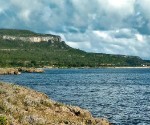
The marine and coral terraces of Maisí, in the far east of Cuba, have been included in the list of the First 100 Geological Heritage Sites on the planet, presented by the International Union of Geological Sciences (IUGS) during an event in which it celebrates its 60th anniversary between this Tuesday and Friday in Zumaia, a UNESCO global geopark on the Basque Coast, Spain. The “top 100” list includes sites spread across 56 countries.
News »
Haven of the Cuban Pre-Hispanic Heritage
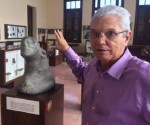
Haven to the works of outstanding men of sciences of Cuba like Luis Montané Darde, Carlos de la Torre, René Herrera Fritot, Ramón Dacal Moure and Manuel Rivero de La Calle, the Montané Anthropological Museum at the School of Biology of the University of Havana reopened its doors in December 2019 after the completion of repair works in the building.
News »
Work of Fernando declared National Cultural Heritage
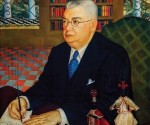
During a ceremony, on the 138th anniversary of the outstanding intellectual’s birth, held in the Aula Magna of San Gerónimo University College, in Havana’s central historic district, Gladys Collazo, president of the National Cultural Heritage Council, announced that the work of Ortiz has been declared National Cultural Heritage.
News »
The story of the Rebel Army’s First Front to be told in Santiago museum
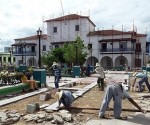
As a key part of the region’s extraordinary history of struggle – beginning with the landing of the Granma expeditionaries and the rebel columns that spread from the Sierra Maestra across the country, culminating with Comandante en Jefe Fidel Castro Ruz announcing the triumph of the Revolution – the José Martí First Front will soon have its own museum here.
News »
Trinidad, the place to experience Cuba’s diversity
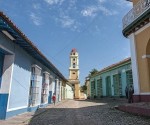
Trinidad boasts four of the six principal tourist destinations in the province of Sancti Spíritus, in the center of the island. It is not only one of the best preserved colonial cities in the Caribbean, but also offers the beach at Ancón, one of the most popular on the southern coast of Cuba, as well as natural sites like Topes de Collantes and the Valle de los Ingenios, declared a World Heritage Site in 1988 by the United Nations Organization for Education, Science, and Culture (UNESCO), along with the city.
News »
Tumba Francesa Celebrated in Santiago de Cuba
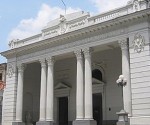
An exhibition of articles and documents related to Tumba Francesa La Caridad de Oriente, declared World Cultural Heritage, are exhibited at the Art Hall of the Emilio Bacardi Museum on occasion of the 15 years of the group as World Heritage.
News »
From where the palms grow
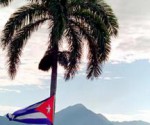
In this landscape, where slender palms grow, alongside intense colors that were never for sale, a human canvas was painted marked by the hopes of those who took up arms and worked hard: men-children with unkempt beards and hair falling onto their rebellious shoulders, young women made powerful by their strong souls and fierce pride.
News »
Preparations to celebrate 62nd anniversary of the Assault on the Moncada Barracks and 500th anniversary of the founding of Santiago
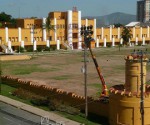
The emblematic site of the Moncada Barracks is preparing to celebrate the 62nd anniversary of the heroic deeds lead by Fidel Castro on July 26, 1953, and the 500th anniversary of the founding of Santiago. Army General Raúl Castro Ruz, in the midst of the prevailing excitement surrounding the visit of the President of the People’s Republic of China, Xi Jinping, announced on July 23 last year in Céspedes Park, that both events would be celebrated this year at the same time as the assault of 1953.
News »
Significance of Remedios to Cuban culture highlighted

The history of Cuba cannot be written without mentioning San Juan de los Remedios, a city that has made a significant contribution to Cuban culture, Eusebio Leal Spengler, Havana’s City Historian, stated during the ceremonial session of the Municipal Assembly of People’s Power to mark the 500th anniversary of the eighth villa founded by the Spaniards in Cuba, which was presided over by José Ramón Machado Ventura, second secretary of the Central Committee of the Party, and Miguel Díaz-Canel Bermúdez, first vice president of the Councils of State and Ministers.
News »
Egypt Demands Restitution of Heritage Plundered by Colonialism
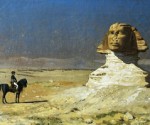
Egypt proposed that the UNESCO Convention includes the total theft of the historic heritage of the Arab countries, it was released during the conference on Cultural Property that ended today here.
The text establishes the return of the relics stolen and smuggling shipped to museums and private collections since 1970, leaving out the pieces stolen during the European colonial phase as of the end of World War I in 1917.